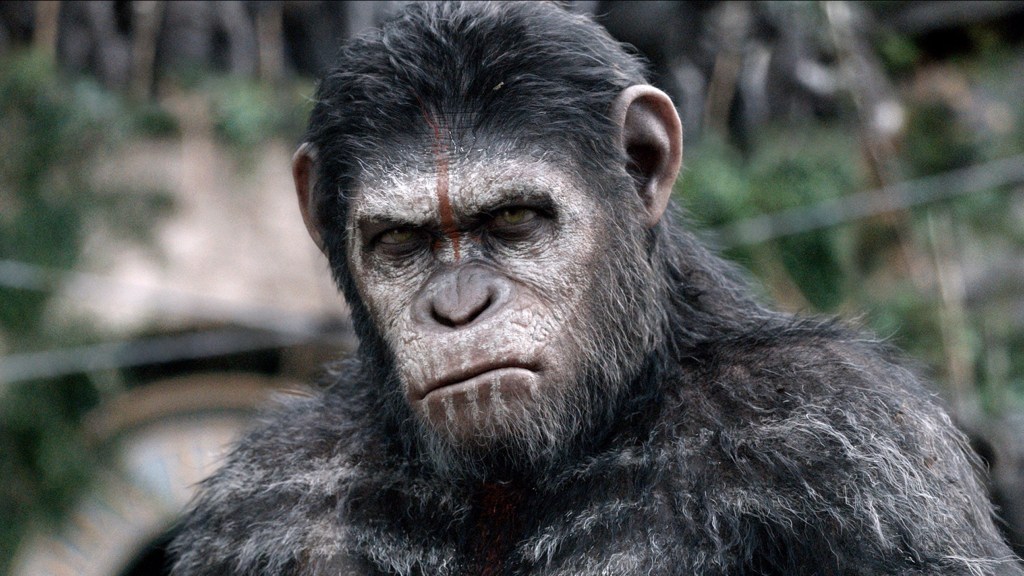Over 10 years after its release, Dawn of the Planet of the Apes is still widely considered to be the best installment in the rebooted Planet of the Apes film series. Building off the surprising success of 2011’s Rise of the Planet of the Apes, the movie pushed the story in fascinating ways, jumping ahead to a time when the Simian Flu had ravaged humanity and survivors were fighting to just get by. Dawn of the Planet of the Apes explores the fallout of the spread of the virus, transporting viewers to a world where apes were on the verge of becoming the dominant species. Casar attempts to make peace with the humans while also dealing with Koba’s growing frustrations over the situation.
Videos by ComicBook.com
Promotional materials for Dawn of the Planet of the Apes quickly established the film’s tone and post-apocalyptic setting, but 20th Century Fox was prepping viewers for what was in store long before a trailer was released. The studio got into the viral marketing game in a way that was incredibly clever and elaborate at the time, but the strategy would be a non-starter if the film were coming out today.
Dawn of the Planet of the Ape’s Simian Flu Website

The Simian Flu is a key component of the Planet of the Apes franchise, so Fox decided to tap into that when it came time to raise awareness for Dawn of the Planet of the Apes. In July 2013, a handful of months before the film’s first teaser premiered, a Simian Flu website was launched. Modeled after professional health organization websites, the amount of work and detail put into this project is impressive. The site, which is brought to you by the Anti-Ape Association, contains a plethora of information about the Simian Flu. It presents things as if they’re facts from the Office of Public Health Awareness (OPHA).
The site, which is now only accessible through the Wayback Machine, features a comprehensive timeline of the Simian Flu outbreak, detailing key events that took place in the Planet of the Apes universe. The timeline chronicles the virus’ spread from the first case in 2011 (as seen in Rise of the Planet of the Apes) to Russia reporting millions of deaths in 2020, years after things had gotten out of hand around the globe. The website also includes a list of symptoms to watch out for and tips to protect yourself from Simian Flu. There’s even a running social media feed containing mock posts of people commenting on the outbreak.
[RELATED – This Is Still the Best Moment in the New Planet of the Apes Movies]
During the Dawn of the Planet of the Apes marketing campaign, the viral website was an effective method to fill in key gaps between installments. The film begins with a news montage covering the Simian Flu outbreak, but the website goes into greater detail than the movie ever could. It was undeniably a great tool, but 20th Century Fox would have needed to go in a very different direction today.
Why the Simian Flu Website Wouldn’t Work Today

It should be fairly obvious why the fake Simian Flu website wouldn’t fly in today’s climate. The parallels to the COVID-19 pandemic are eerie. Looking at the Dawn of the Planet of the Apes site today, if one didn’t know any better, they’d be forgiven for thinking they were looking at a medical site from 2020 advising people on the coronavirus. The “How it Spreads” section in particular looks like it could have been pulled straight from the Centers for Disease Control and Prevention’s site, warning that the Simian Flu can be contracted either through the air or via contact with people or objects.
The “How Can I Protect Myself” section also brings back upsetting memories of COVID-19. The tips OPHA provides are virtually identical to the ways people were told to protect themselves from COVID (i.e. masks and social distancing). If any movie studio attempted a viral marketing stunt like this today, five years after the pandemic, they would be instantly criticized for operating in extremely poor taste. A viral website like this could also probably cause widespread panic, as it would alarm people who are unaware it’s promoting a movie and not advising about an actual health crisis.
While the Simian Flu will always be a part of the Planet of the Apes franchise and could always be referenced in dialogue, it no longer needs to be a focal point of marketing. Storywise, the series is in a very different place now. The Simian Flu has done its damage, and several generations after War for the Planet of the Apes, the humans left in Kingdom of the Planet of the Apes are struggling to reclaim their place in an evolving world. When it comes time to promote the next installment, the emphasis can be on the humans vs. ape conflict.








